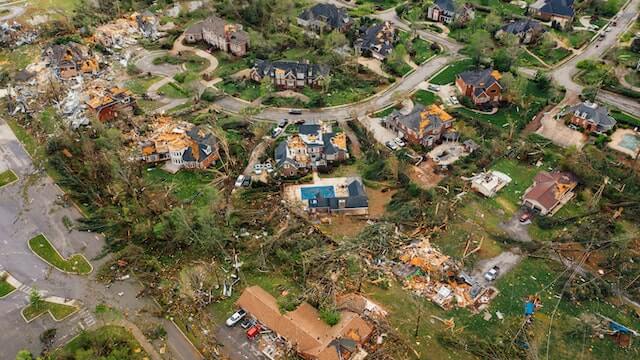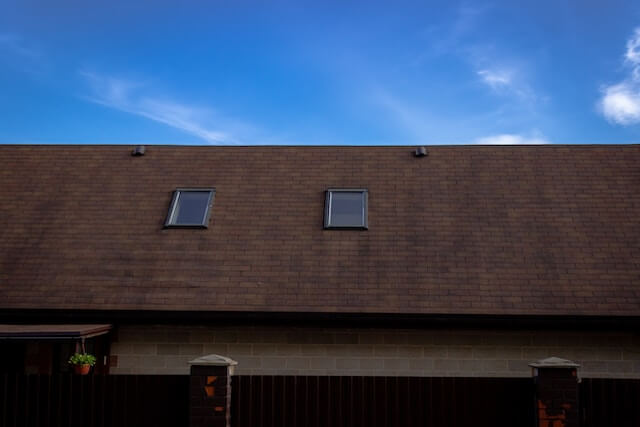South Carolina’s picturesque coastline offers residents and visitors beautiful beaches, a warm climate, and a unique coastal lifestyle. However, residents in coastal regions also bear the responsibility of preparing for hurricanes, especially during hurricane season.
Rental agents must fully grasp the vital importance of hurricane preparedness for rental properties in South Carolina and apply preventive measures and resilient building features that can help safeguard both tenants and investments.
The Hurricane Threat in South Carolina
South Carolina’s coastal areas are vulnerable to hurricanes, with a history of experiencing severe storms. The Atlantic hurricane season, typically from June to November, poses a significant risk to properties along the state’s coastline.
South Carolina has a history of hurricanes making landfall along its coastline. Some notable hurricanes that have affected the state include Hurricane Hugo in 1989, which caused significant damage and is considered one of the most destructive hurricanes in South Carolina’s history. Other notable hurricanes include Hurricane Matthew in 2016 and Hurricane Florence in 2018.

Preventive Measures
Tenant Safety and Education
Ensuring the safety of tenants during hurricanes is a top priority. Rental agents and property owners have a responsibility to educate tenants about hurricane preparedness.
Clearing property of loose objects
Rental agents and property owners should take proactive steps to protect their investments. This includes securing loose objects that could become projectiles during high winds, trimming trees, and installing storm shutters or impact-resistant windows to minimize damage.
Take for example a rental property in Charleston that has a beautiful garden with potted plants and outdoor furniture. During a hurricane, these items could become dangerous projectiles, causing damage to the property or posing a threat to people. Rental agents should recommend securing or relocating these items before a storm to prevent potential harm.
Emergency Kits
Encourage tenants to assemble emergency kits with essential supplies like non-perishable food, canned food, a manual can opener, water, flashlights, batteries, and first-aid supplies. Provide a checklist to help them prepare. Additionally, include a list of important contacts. Furthermore, emphasize the importance of regularly checking and restocking these kits.
Evacuation Plans
Rental agents should have clear evacuation plans in place and share them with tenants. This includes designating evacuation routes, identifying local shelters, and outlining communication protocols.
Agents may host orientation meetings with tenants to discuss these plans and answer any questions.
Insurance Coverage
Encourage property owners to invest in comprehensive insurance coverage that includes protection against hurricane and flood damage. Rental agents should verify the adequacy of insurance policies regularly. Having the right insurance policy can make a significant difference in recovering from a disaster.
Flood Mitigation
Properties located in flood-prone areas should implement flood mitigation measures such as raising electrical systems, installing flood vents, and elevating HVAC units. For instance, properties in vulnerable flood zones in cities like Beaufort can benefit from elevating HVAC units above the base flood elevation because it can prevent costly damage and downtime after a hurricane-related flood.
Resilient Building Features
Secure Roofing
A secure roof is crucial during a hurricane. Recommend regular inspections and maintenance to ensure that roofs are in good condition and able to withstand high winds.

Impact-resistant roofing materials, such as asphalt shingles with a high wind rating or metal roofing, are designed to withstand the impact of flying debris during a hurricane. These materials are less likely to sustain damage, which can help prevent water intrusion and structural damage.
Hurricane straps, also known as roof or truss ties, are metal connectors that securely fasten the roof to the walls of the house. These straps help prevent high winds from lifting the roof off. Manufacturers typically make them from galvanized steel and install them at various points along the roof structure.
You can reinforce roof decking, the layer of material under the roof covering, with plywood or oriented strand board (OSB) that meets higher wind-resistance standards. This reinforcement helps the roof maintain its structural integrity during hurricane-force winds.
Elevated Foundations
Properties with raised foundations are less susceptible to flooding, a common issue during hurricanes. Recommend elevating properties to the required base flood elevation (BFE) or above to minimize flood risk.
In areas with a high flood risk, consider constructing homes with pier and beam foundations. This type of foundation elevates the home above the ground on a system of piers or posts. You can use the space underneath for storage or as an open area that allows floodwaters to flow freely beneath the house.
Consider installing flood vents in the walls of the enclosed space beneath the elevated structure. Flood vents allow floodwaters to enter and exit freely, reducing hydrostatic pressure on the foundation walls during a flood event. Furthermore, when elevating a home, ensure that safe and accessible entry points are maintained. This may involve adding stairs, ramps, or elevated walkways to reach the elevated structure.
Storm Shutters
Highlight the importance of installing storm shutters or impact-resistant windows. These features provide an extra layer of protection against wind and debris.
Accordion shutters are a popular choice for hurricane protection in South Carolina. They are permanently attached to the sides of windows and can be easily unfolded and locked in place when a storm is approaching. Accordion shutters provide a protective barrier against wind, rain, and flying debris.
Roll-down shutters are another effective option. They consist of metal or aluminum panels that are stored in a housing above the window when not in use. In preparation for a storm, you can roll down these panels to cover the windows, providing protection against strong winds and flying debris.
Secure Entry Points
Securing entry points is a critical aspect of hurricane preparedness and home safety in hurricane-prone areas like South Carolina. By investing in the right materials, reinforcement techniques, and regular maintenance, homeowners and rental property managers can enhance the resilience of their homes and protect against the destructive forces of hurricanes.
Reinforce entry points, including doors and windows, to prevent water intrusion. Invest in impact-resistant doors and windows that meet or exceed local building codes for hurricane resistance. Designers created these doors and windows to withstand flying debris and high winds during a hurricane.
Ensure that door and window frames are securely anchored to the building’s structure. Reinforce these frames with metal connectors, anchor bolts, or hurricane straps to prevent them from being blown in during a storm. Sliding glass doors are especially vulnerable. Install impact-resistant glass or protective film, and use a secondary locking mechanism, such as a bar or rod, to prevent the door from being lifted off its tracks.

Safeguarding South Carolina Rentals from Hurricane Threats
In the face of South Carolina’s hurricane threats, proactive hurricane preparedness is paramount for rental property owners and agents. By implementing preventive measures, focusing on tenant safety and education, and investing in resilient building features and insurance, we can safeguard our rental properties and the well-being of our tenants.
Moreover, to make the process of managing and marketing your rental properties more efficient, consider utilizing platforms like Padleads. Padleads allows you to seamlessly list and syndicate your rental properties, ensuring maximum visibility to potential renters.